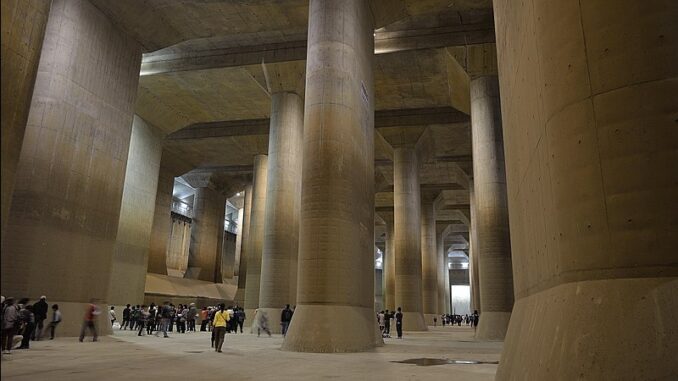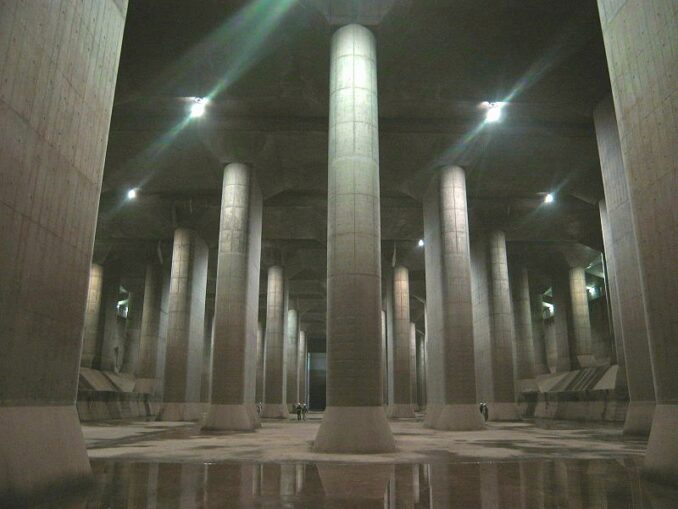
For centuries, flooding in Tokyo has been a major problem with catastrophic economic damage resulting. From June through late October, the rainy season (which may include a typhoon) delivers more water than the area’s 100 rivers can carry away. Even without a typhoon, the rainy season dumps more precipitation than the local geography can absorb or disperse in a short time frame.
To deal with the annual epic flooding, the government has constructed the Metropolitan Area Outer Underground Discharge Channel. Begun in 1992, the massive civil engineering feat was completed in 2006. The total cost of the project approached $2.2 billion dollars (230 billion yen), but flood damage to homes and other buildings and infrastructure has been reduced 90%, saving $1.4 billion dollars (148 billion yen) in cleanup costs.
There are five silos (cylindrical water tanks) each approximately 213 feet (65 meters) in height with a diameter of about 105 feet (32 meters). The main rectangular water tank is 580 feet (177 meters) long, 256 feet (78 meters) wide, and 83 feet (25.4 meters) in height. Four NFL football fields could just about fit inside. Because many concrete columns resembling Greek architecture are employed to support the earth above it, the facility is often referred to as the “Underground Temple” or “Underground Parthenon”. The main water tank is supported by 59 concrete pillars, each of which weighs 500 tons.

The entire system is connected by almost 4 miles (6.4 kilometers) of tunnels, which lay 164 feet (50 meters) underground. There are 78 water pumps, each of which is rated at 13,000 horsepower (10 Megawatts), that can pump 200 tons of water (think Olympic-size pool) per second out of the Underground Temple and into a nearby river where it will flow away from the city. It is said to be the world’s largest underground infrastructure for handling flood water.
The Tokyo area has 10 other subterranean reservoirs and three other flood tunnels in addition to the Metropolitan Area Outer Underground Discharge Channel, and more are planned. The systems have been so successful and cost effective that other Japanese cities are building their own underground flood abatement infrastructure.
The engineering marvel has been a location set for movies (including The Hunger Games), TV shows, and a video game.
Question of the Night: What’s the worst flooding you’ve experienced?
